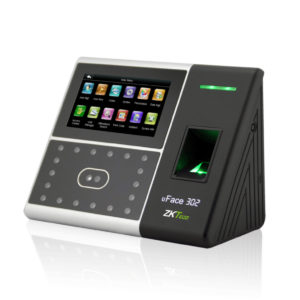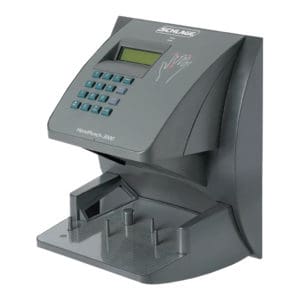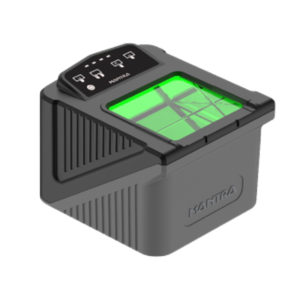
07 Aug Biometric Attendance: 4 Reasons Why You Need One Right Now
What is biometric attendance?
Biometric attendance is a modern attendance tracking technology that uses unique human biological characteristics to verify and record an individual’s presence at work. These biological characteristics could include fingerprints, facial features, the iris of the eye, or the geometry of the hand.
In a typical biometric attendance system, employees clock in and out by interacting with a biometric device, such as placing their finger on a fingerprint scanner or standing in front of a facial recognition camera. The device verifies their identity by comparing the presented biometric data with stored records in the system.
The primary advantage of biometric attendance systems is their ability to prevent “buddy punching” — a fraudulent practice where one employee clocks in or out on behalf of another. Additionally, these systems can automate attendance tracking, thereby reducing administrative burdens and potential errors associated with manual processes.
However, the use of biometric attendance systems also raises important considerations, particularly around privacy and data security. Since biometric data is highly sensitive and unique to each individual, it’s crucial that organizations implement robust measures to protect this data from misuse or breach.
In an ever-evolving digital world, timekeeping is no longer restricted to traditional punch cards and time clocks. Today, businesses are increasingly adopting biometric attendance systems to streamline their attendance and time management procedures.
Also Read: Benefits of using an attendance tracker.
Types of Biometric Time Clocks
Biometric time clocks come in various forms, each leveraging different human attributes to identify and verify individual users. Here are the most commonly used types:
1. Fingerprint Biometric Time Clocks
These are the most common types of biometric systems. They use unique fingerprint patterns for identification. Employees place their finger on a scanner to clock in and out, providing a quick, convenient method to track attendance. Example: ESSL X990
2. Facial Recognition Time Clocks
These systems utilize sophisticated algorithms to analyze facial features and verify an individual’s identity. Employees stand in front of a camera, which captures their face and matches it against a stored image to verify their identity. Example: ESSL UFACE
Also Read: Our detailed write up facial recognition.
3. Iris Recognition Time Clocks
Iris recognition systems analyze the unique patterns found in an individual’s iris. These systems offer the highest level of accuracy among biometric technologies but are also the most expensive.
4. Hand Geometry Time Clocks
These systems measure and analyze the shape of an individual’s hand, including the lengths and widths of fingers and the overall hand structure. While not as accurate as fingerprint or iris recognition, hand geometry systems offer an effective solution for environments where hands may be dirty or worn. Example: Schlage Hand Punch.
Benefits of Biometric Attendance Systems
Biometric attendance systems offer several key advantages over traditional methods:
1. Accuracy
Since biometrics rely on unique human characteristics, they significantly reduce the risk of fraud, such as “buddy punching” — a practice where one employee clocks in or out for another.
2. Efficiency
Biometric systems automate time and attendance tracking, eliminating manual input and the associated risk of human error. This automation leads to a more streamlined payroll process.
Also Read: Tips to avoid payroll errors.
3. Accountability
By providing a precise record of when employees clock in and out, biometric systems ensure accountability. This can lead to increased productivity and more efficient workforce management.
4. Cost Savings
While the initial investment might be more significant than traditional systems, the accuracy, efficiency, and improved productivity offered by biometric attendance systems can lead to significant cost savings in the long run.
Implementing Biometric Attendance Systems
When implementing a biometric attendance system, it’s essential to follow a structured approach:
- Needs Analysis: Understand the requirements of your organization, the number of employees, and the environment in which the system will be used.
- Vendor Selection: Choose a vendor with a proven track record of delivering reliable, high-quality biometric solutions. ClockIt offers biometric integrations and helps you generate real-time attendance reports.
- Integration: Work with your vendor to integrate the system into your existing HR and payroll systems.
- Employee Training: Train your employees on how to use the new system. This may include how to clock in and out, as well as how to handle any issues that might arise.
- Policy Update: Update your company’s attendance policies to reflect the new system.
Drawbacks of Biometric Attendance Systems
Despite their many benefits, biometric attendance systems also come with some potential drawbacks:
1. Privacy Concerns
Since biometric data is unique and irreplaceable, its misuse can pose serious privacy risks. Organizations must ensure that they protect this sensitive data with robust security measures.
2. Initial Costs
The upfront costs of purchasing and implementing biometric systems can be high. However, these costs are often offset by the increased efficiency and cost savings over time.
3. False Rejections
Though rare, biometric systems can sometimes reject a valid user. These ‘false rejections’ can cause frustration and disrupt work processes.
4. Health and Safety Concerns
In the wake of global health crises, shared biometric devices, particularly those requiring touch, can become a concern for disease transmission. Contactless solutions like facial recognition are gaining more popularity in these circumstances.
Conclusion
Despite some drawbacks, biometric attendance systems offer businesses a modern, efficient, and reliable way to manage time and attendance. With careful implementation and robust data protection measures, these systems can provide significant benefits and revolutionize the way organizations manage their workforce.






